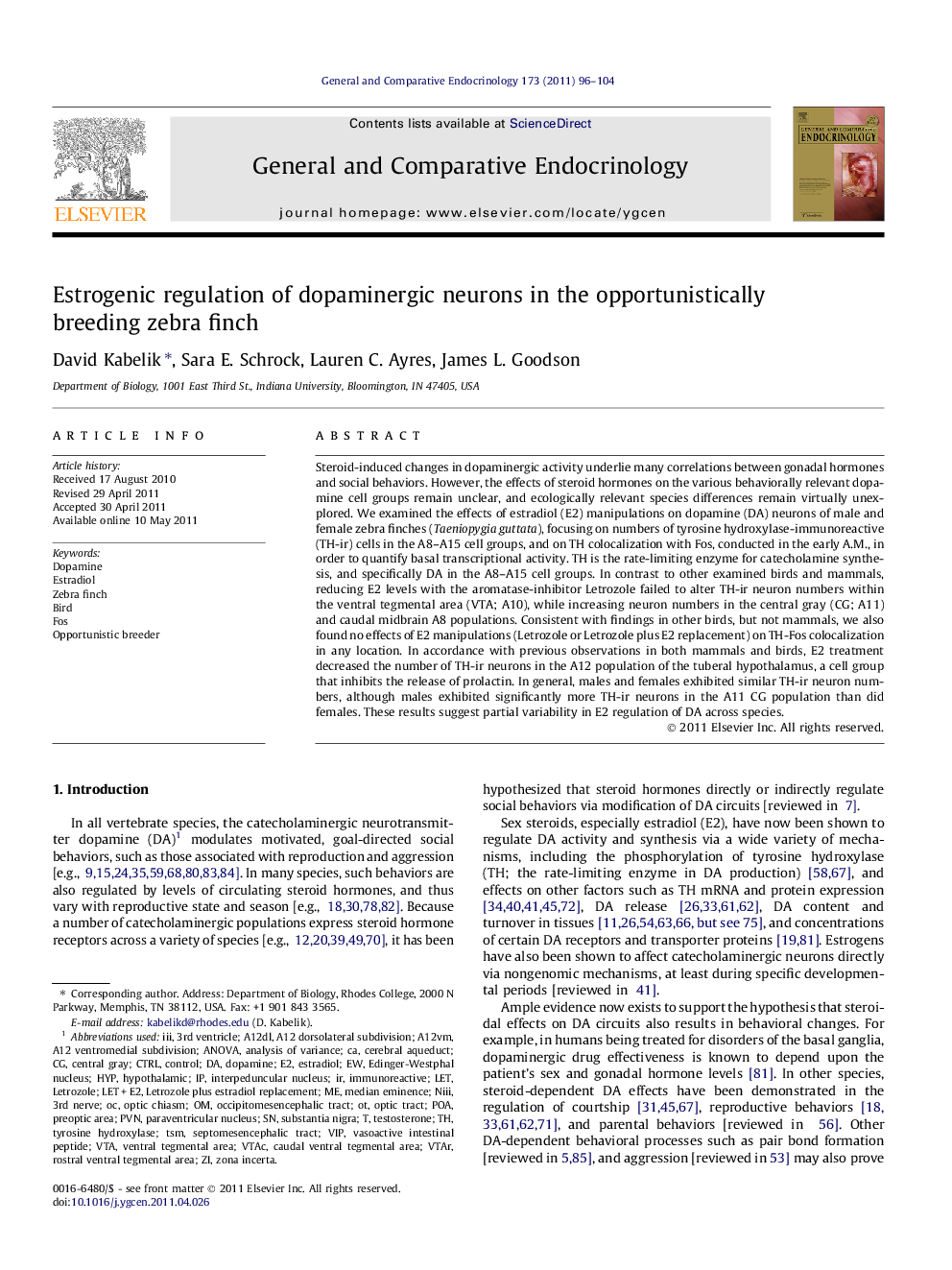| کد مقاله | کد نشریه | سال انتشار | مقاله انگلیسی | نسخه تمام متن |
|---|---|---|---|---|
| 2800889 | 1156132 | 2011 | 9 صفحه PDF | دانلود رایگان |

Steroid-induced changes in dopaminergic activity underlie many correlations between gonadal hormones and social behaviors. However, the effects of steroid hormones on the various behaviorally relevant dopamine cell groups remain unclear, and ecologically relevant species differences remain virtually unexplored. We examined the effects of estradiol (E2) manipulations on dopamine (DA) neurons of male and female zebra finches (Taeniopygia guttata), focusing on numbers of tyrosine hydroxylase-immunoreactive (TH-ir) cells in the A8–A15 cell groups, and on TH colocalization with Fos, conducted in the early A.M., in order to quantify basal transcriptional activity. TH is the rate-limiting enzyme for catecholamine synthesis, and specifically DA in the A8–A15 cell groups. In contrast to other examined birds and mammals, reducing E2 levels with the aromatase-inhibitor Letrozole failed to alter TH-ir neuron numbers within the ventral tegmental area (VTA; A10), while increasing neuron numbers in the central gray (CG; A11) and caudal midbrain A8 populations. Consistent with findings in other birds, but not mammals, we also found no effects of E2 manipulations (Letrozole or Letrozole plus E2 replacement) on TH-Fos colocalization in any location. In accordance with previous observations in both mammals and birds, E2 treatment decreased the number of TH-ir neurons in the A12 population of the tuberal hypothalamus, a cell group that inhibits the release of prolactin. In general, males and females exhibited similar TH-ir neuron numbers, although males exhibited significantly more TH-ir neurons in the A11 CG population than did females. These results suggest partial variability in E2 regulation of DA across species.
► Estrogens alter dopamine neuron numbers in the zebra finch brain.
► Species-specific effects may be adaptations for year-round breeding.
► Males have more tyrosine hydroxylase neurons in the midbrain central gray than females.
► Estrogens do not affect the colocalization of tyrosine hydroxylase and Fos.
Journal: General and Comparative Endocrinology - Volume 173, Issue 1, 1 August 2011, Pages 96–104